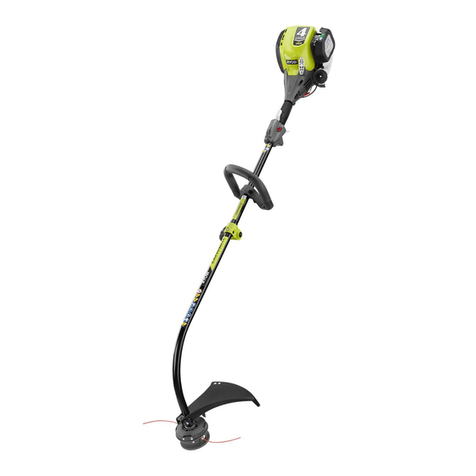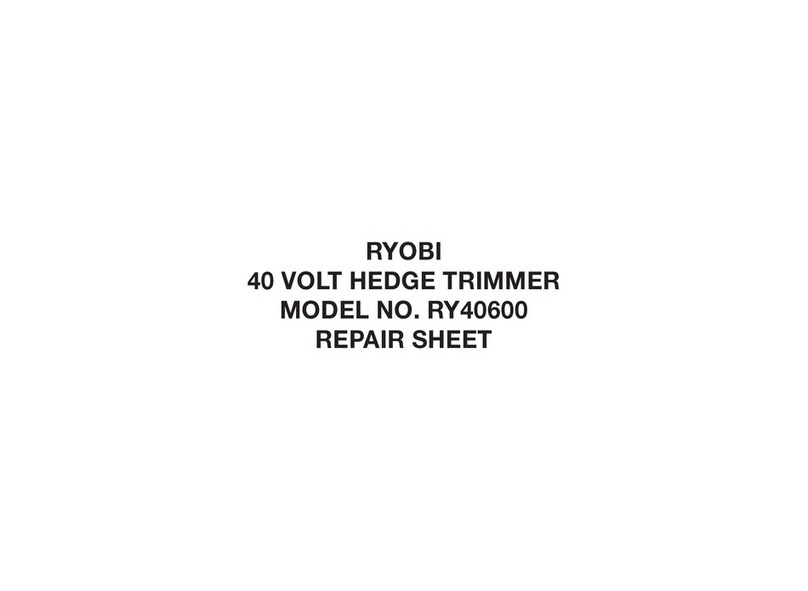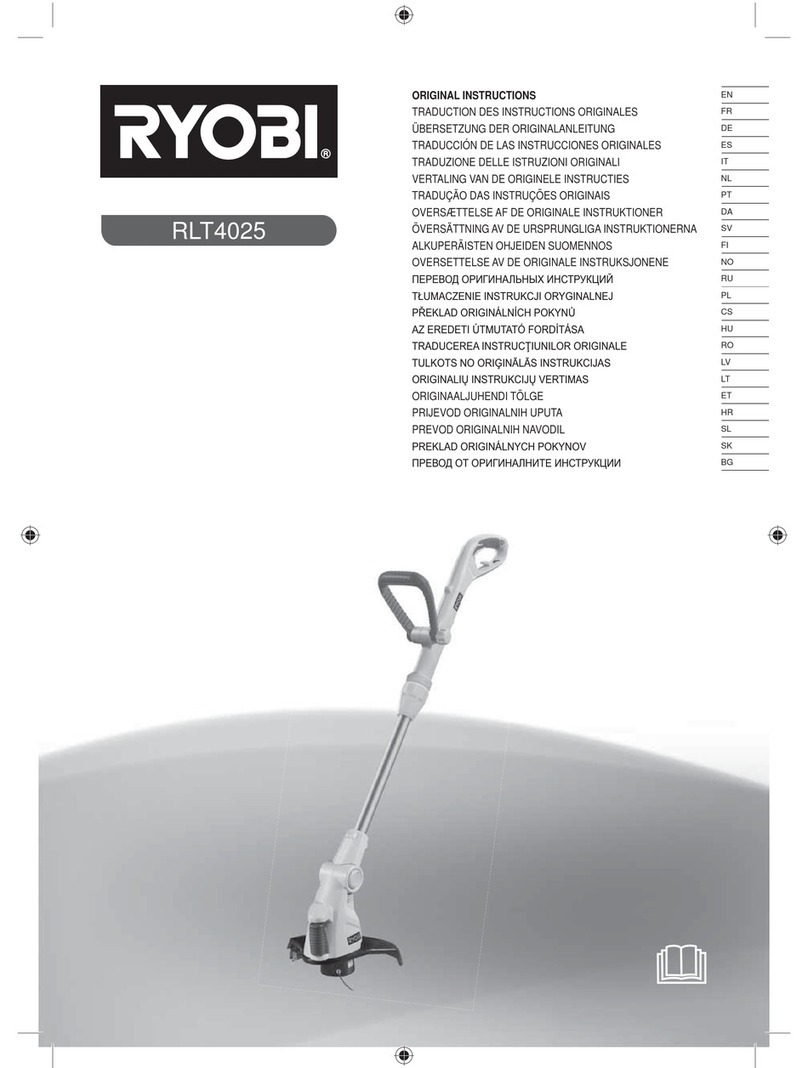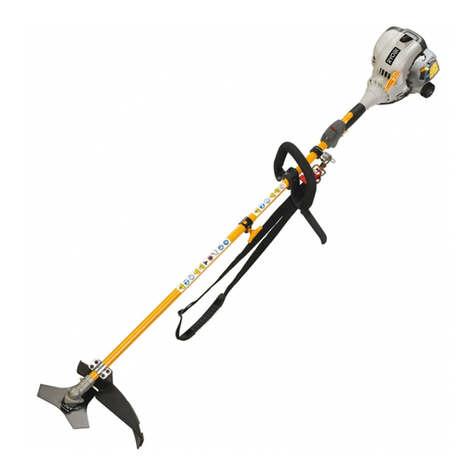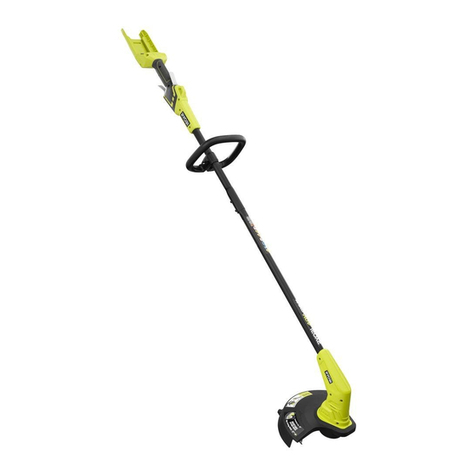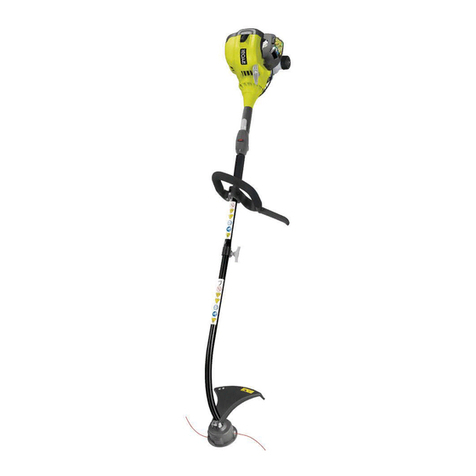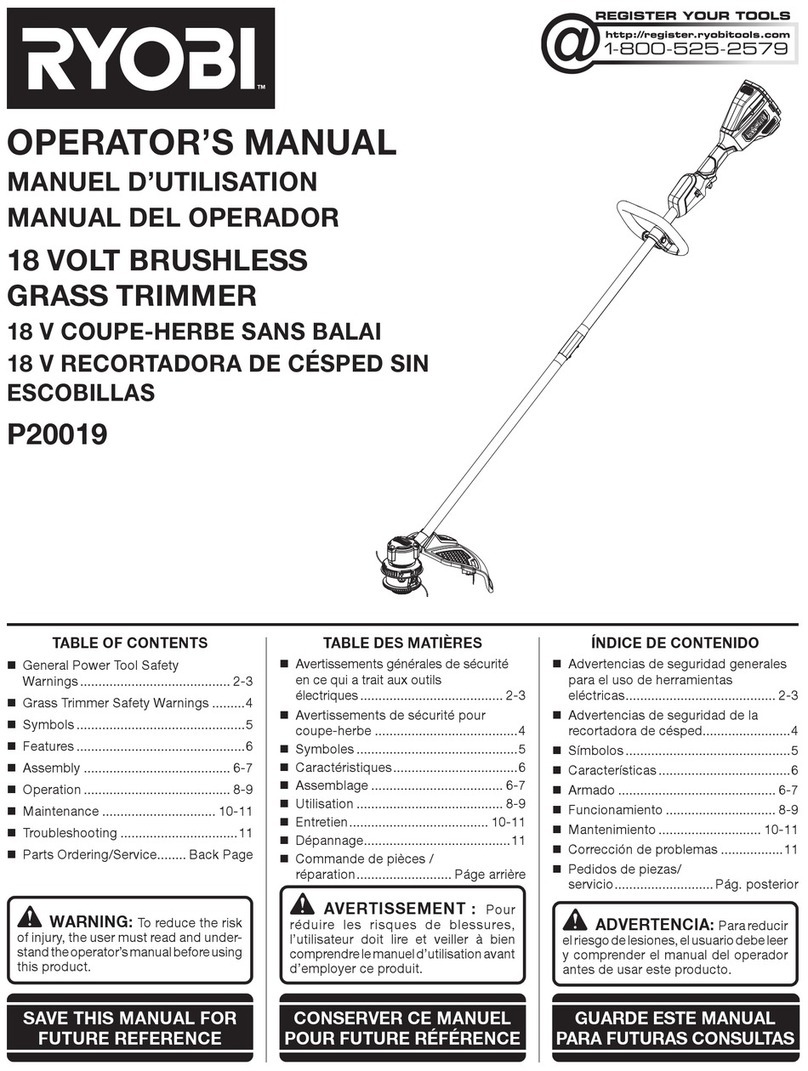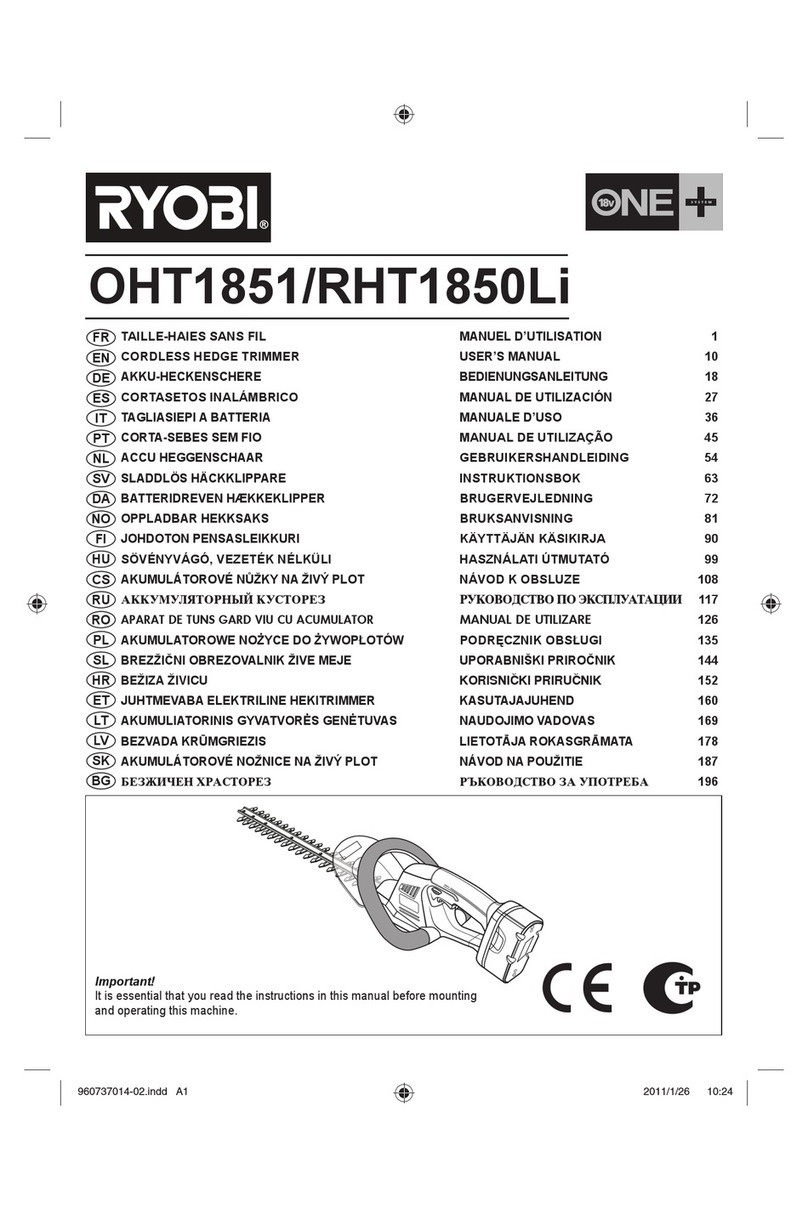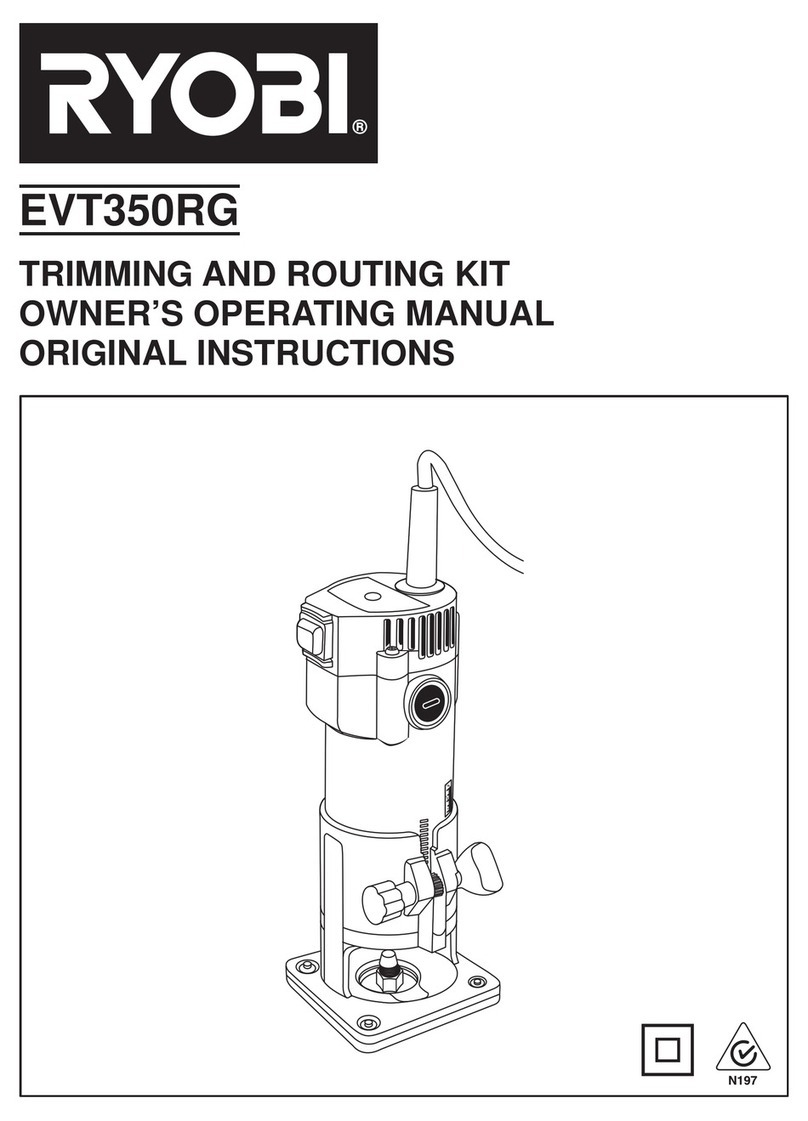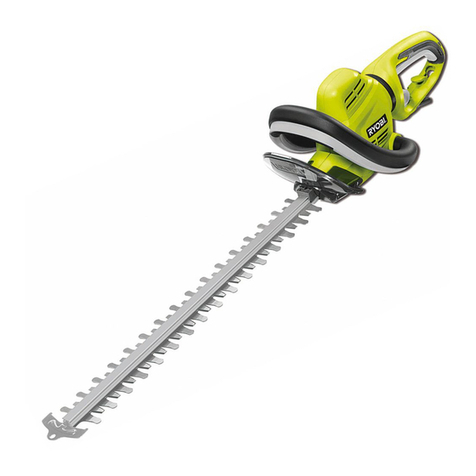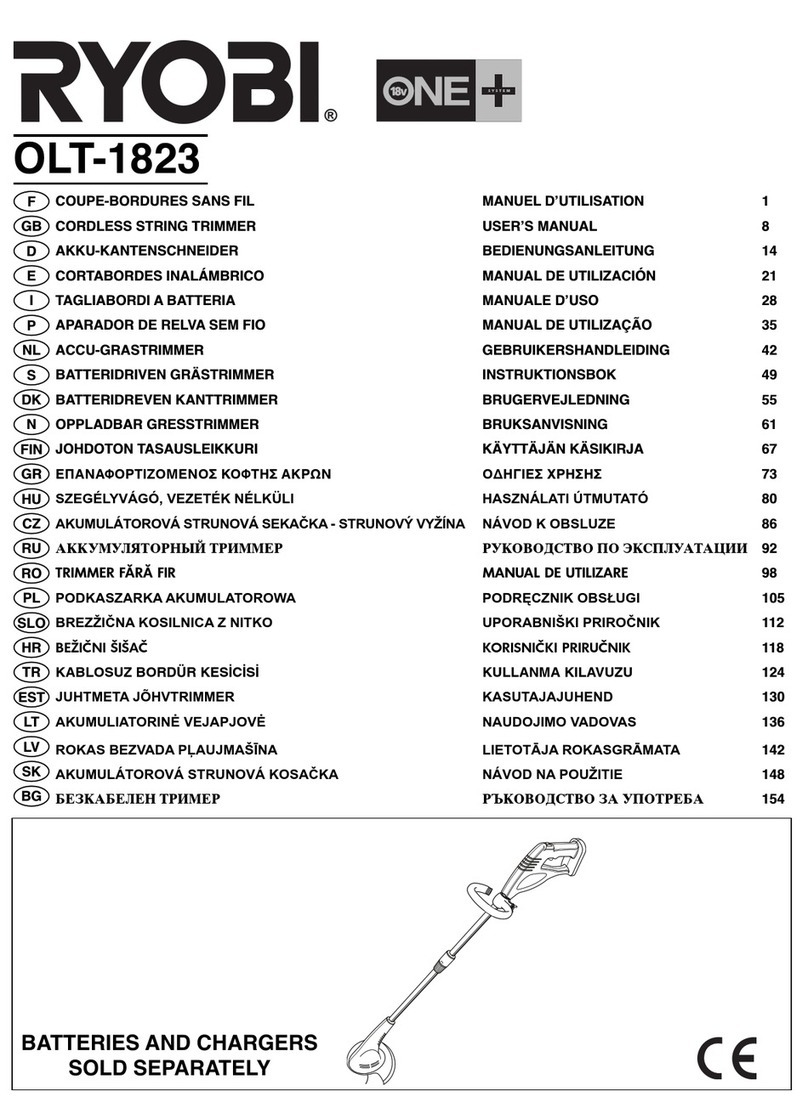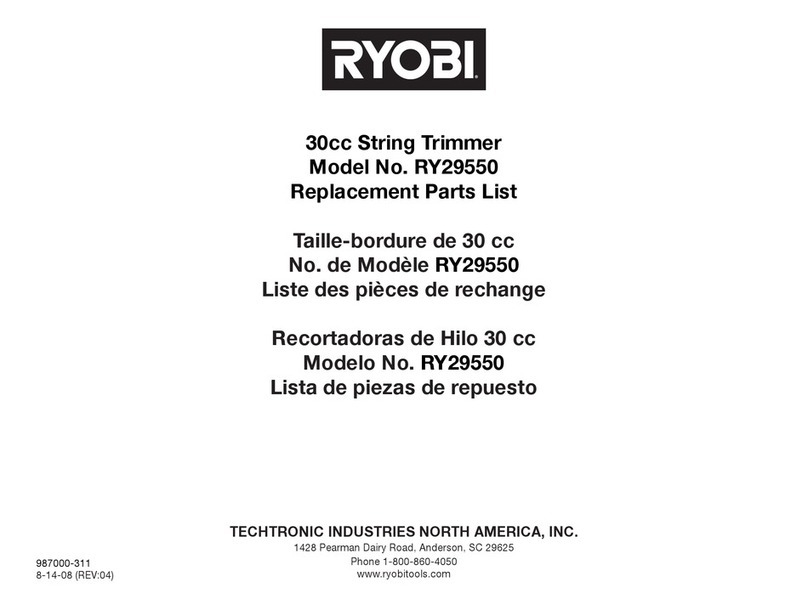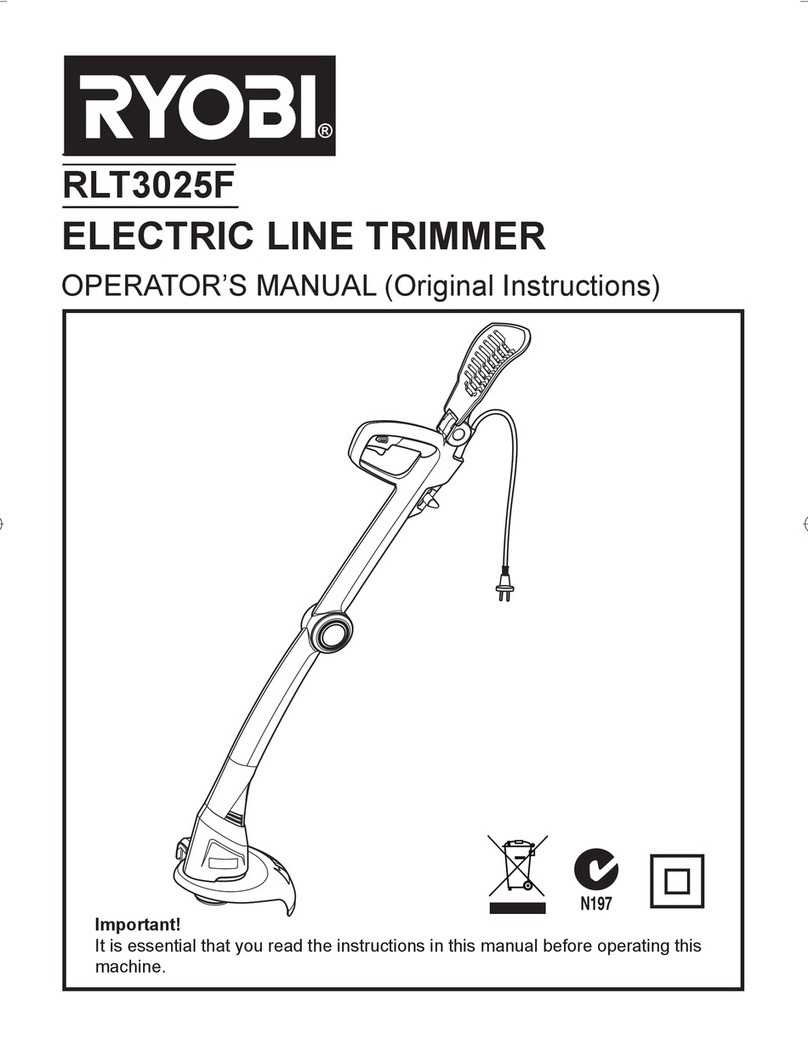
3 — English
Pack/Charger Correlation Supplement 987000-432.
Do not dispose of the batteries in a fire. The cell may
explode. Check with local codes for possible special
disposal instructions.
Donotopenor mutilate the batteries. Released electrolyte
is corrosive and may cause damage to the eyes or skin.
It may be toxic if swallowed.
Do not place battery tools or their batteries near fire or
heat. This will reduce the risk of explosion and possibly
injury.
Batteries can explode in the presence of a source of
ignition, such as a pilot light. To reduce the risk of seri-
ous personal injury, never use any cordless product in
the presence of open flame. An exploded battery can
propel debris and chemicals. If exposed, flush with water
immediately.
Do not crush, drop or damage battery pack. Do not
use a battery pack or charger that has been dropped or
received a sharp blow. A damaged battery is subject to
explosion. Properly dispose of a dropped or damaged
battery immediately.
Under extreme usage or temperature conditions, battery
leakage may occur. If liquid comes in contact with your
skin, wash immediately with soap and water. If liquid gets
into your eyes, flush them with clean water for at least 10
minutes,thenseek immediate medicalattention.Following
this rule will reduce the risk of serious personal injury.
Recharge only with the charger specified by the manu-
facturer. A charger that is suitable for one type of battery
pack may create a risk of fire when used with another
battery pack.
Use appliances only with specifically designated battery
packs. Use of any other battery packs may create a risk
of injury and fire.
When battery pack is not in use, keep it away from other
metal objects, like paper clips, coins, keys, nails, screws
or other small metal objects, that can make a connec-
tion from one terminal to another. Shorting the battery
terminals together may cause burns or a fire.
Follow all charging instructions and do not charge the
battery pack or appliance outside of the temperature
range specified in the instructions. Charging improperly
or at temperatures outside of the specified range may
damage the battery and increase the risk of fire.
Have servicing performed by a qualified repair person
using only identical replacement parts. This will ensure
that the safety of the product is maintained
Do not modify or attempt to repair the appliance or the
battery pack except as indicated in the instructions for
use and care.
Save these instructions. Refer to them frequently and
use them to instruct others who may use this power tool.
If you loan someone this power tool, loan them these
instructions also.
Store idle appliances indoors – When not in use, string
trimmer should be stored indoors in a dry, locked place
out of the reach of children.
Never use blades, flailing devices, wire or rope. Unit is
designed for line trimmer use only. Use of any other ac-
cessories or attachments will increase the risk of injury.
Inspect area to be cut. Remove objects (rocks, broken
glass, nails, wire, string, etc.) which can be thrown or
become entangled in cutting head.
Keep the air vents clean and free of debris to avoid over-
heating the motor. Clean after each use.
Stop the motor, wait until all moving parts come to a com-
plete stop, and remove the battery pack before cleaning
or performing any maintenance.
Never use water or any liquids to clean or rinse off your
product and do not expose the product to rain or wet
conditions. Store indoors in a dry area. Corrosive liquids,
water, and chemicals can enter the product’s electronic
components and/or battery compartment and damage
electronic componentsand/or the battery pack, whichcan
result in a short circuit, increased risk of fire, and serious
personal injury. Remove any buildup of dirt and debris by
wiping the product clean with a dry cloth occasionally.
Stop the unit and disconnect the power source when not
in use. Carry the unit with the motor stopped.
Store out of the reach of children.
Do not hang unit so that the switch trigger is depressed.
Battery tools do not have to be plugged into an electrical
outlet; therefore, they are always in operating condition.
Be aware of possible hazards when not using your bat-
tery tool or when changing accessories. Following this
rule will reduce the risk of electric shock, fire, or serious
personal injury.
Under abusive conditions, liquid may be ejected from
the battery; avoid contact. If contact accidentally occurs,
flush with water. If liquid contacts eyes, additionally seek
medical help. Liquid ejected from the battery may cause
irritation or burns.
Do not use a battery pack or appliance that is damaged
or modified. Damaged or modified batteries may exhibit
unpredictable behavior resulting in fire, explosion or risk
of injury.
Do not expose a battery pack or appliance to fire or
excessive temperature. Exposure to fire or temperature
above 265°F may cause explosion.
Do not charge battery tool in rain, or damp or wet location.
Following this rule will reduce the risk of electric shock.
Do not use battery-operated appliance in rain.
Remove or disconnect battery when not charging, and
before servicing, cleaning, removing material from the
gardening appliance, or storing.
Use battery only with charger listed. For use with 18V
lithium-ion battery packs. See Tool/Appliance/Battery
IMPORTANT SAFETY INSTRUCTIONS

